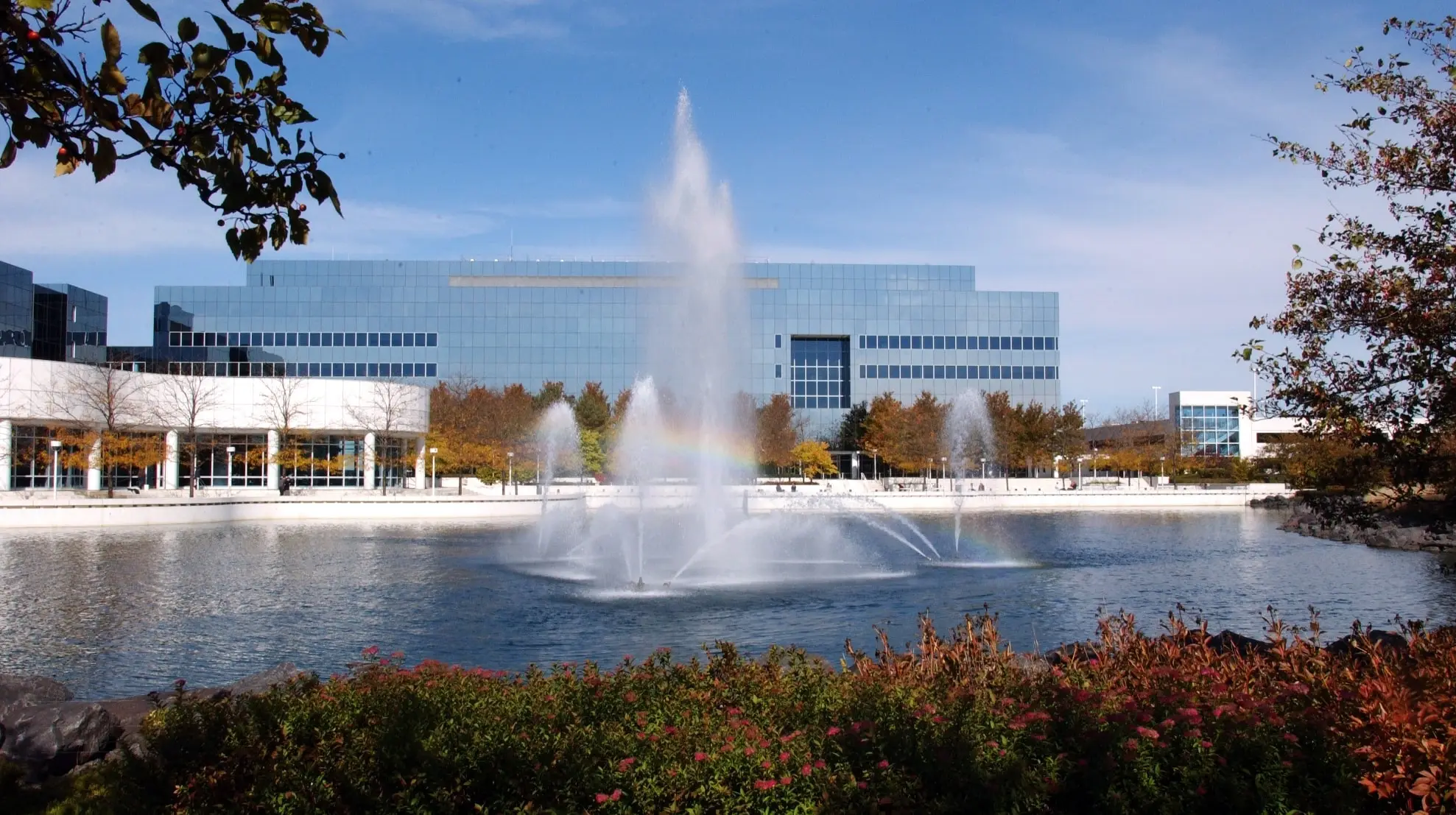Image source: Transformco, “Sears Holdings Headquarters.” Accessed via https://transformco.com/media/media-gallery/images
At the end of 2023, Compass purchased the former Sears headquarter campus outside of Chicago. It had been only sparsely populated following Sears’ bankruptcy filing in 2018 and vacant since the spring 2020 onset of the pandemic. With so few companies returning to work in the office following the pandemic, selling the expansive site as office space was challenging. Repurposing it for data center development was a solution welcomed by the Village of Hoffman Estates.
“The redevelopment of the former Sears headquarters into a data center campus begins a new chapter for this high-profile property and continues the technology diversification of our tax base.”
— Mayor Bill McLeod, Mayor, The Village of Hoffman Estates
For Compass, the site’s existing infrastructure and close proximity to the Chicago market made it an ideal location for this development. In addition, Illinois’ electric infrastructure is strong and ComEd is an eager supporter of the project. However, redevelopment of a large campus such as this required a new approach. Compass looked for opportunities to develop it sustainably — minimizing waste and repurposing where we could — and be good neighbors.
Putting plans to paper
With the sale complete, we set out to consider how to take 2.4 million square feet of office space and transition it to data center use. At Compass, we go slow before we go fast. We wanted to be methodical and thoughtful, extending the sustainable approach we take to greenfield development projects to this brownfield site.
While we worked on plans, we opened the buildings to first responders for training. Police departments across the region took advantage of access to the buildings to conduct active shooter, forcible entry, K-9 training and more. Fire crews trained on ladder trucks, interior structures, search and rescue, and more.
At the same time, the buildings were made accessible to local organizations who could repurpose building contents. The Village of Hoffman Estates helped by inviting local businesses and nonprofit organizations to give furnishings, tools, equipment, and materials remaining in the building a new home.
Selecting a like-minded partner
The sustainability-centered Sears demolition started with an exhaustive search for the right contractor. We considered six different potential demolition contractors, placing a high priority on the contractor’s ability to:
- Adhere to all state and federal safety and regulatory standards.
- Support a safe work environment.
- Minimize waste and maximize recycling and re-use of existing site materials.
- Maintain an orderly work site and minimize dust for the sake of our neighbors.
- Adhere to deadlines and keep the project on schedule.
Each step of the way, Compass is building safety and security into the process. There will be full-time safety personnel on site throughout demolition. Teams will follow the Compares Cares protocol for safe construction practices, focused on celebrating safety and health conscientiousness on our job sites.
Getting started
As with any large project, Compass will take a phased approach starting with emptying the buildings of equipment, furniture and materials in a structured, environmentally sensitive way.
The first part of the process is selective demolition. American Demolition got started in April, emptying the remaining building contents. First, they focused on safe removal and disposal of universal waste, defined by the EPA as batteries, pesticides, mercury-containing equipment, lamps and aerosol cans. Contractors specializing in hazardous waste removal will support this phase of selective demo.
With hazardous and universal waste safely removed, American Demolition will start removing reusable or recyclable materials for salvage. A big item in this phase will be the removal of ferrous materials, which are metals primarily composed of iron like steel, alloy steel, cast iron and wrought iron.
In June, we’ll kick off structural demolition of the parking garages and will move onto office buildings once they are cleared, working from west to east with an estimated project completion by the end of 2025. Mechanical wrecking will be done from a boom lift with a dust mister attached to keep dust to a minimum for neighbors. As levels come down, American Demolition will clear debris from each level to support a clean and safe site.
Concrete, stone blocks and asphalt will be crushed and stored on site to be re-used as aggregate in cement production. Compass uses an artificial intelligence application to help optimize these types of locally available, reuseable raw materials for cement production to reduce the amount of cement (the production of which generates a great volume of greenhouse gas emissions) required to build Compass data centers by 25%. Crushed materials will also be used when grading, to make the site level.
The path forward
With a campus of this scale, using these methodical processes, the Sears demolition will take more than a year to complete. In the meantime, we’ll continue allowing first responders to train and collaborate with ComEd and the Village of Hoffman Estates to smooth the path to delivery and create maximum benefits for the surrounding community today and for years to come.
Click here to learn more about Compass Datacenters’ commitment to sustainability.
